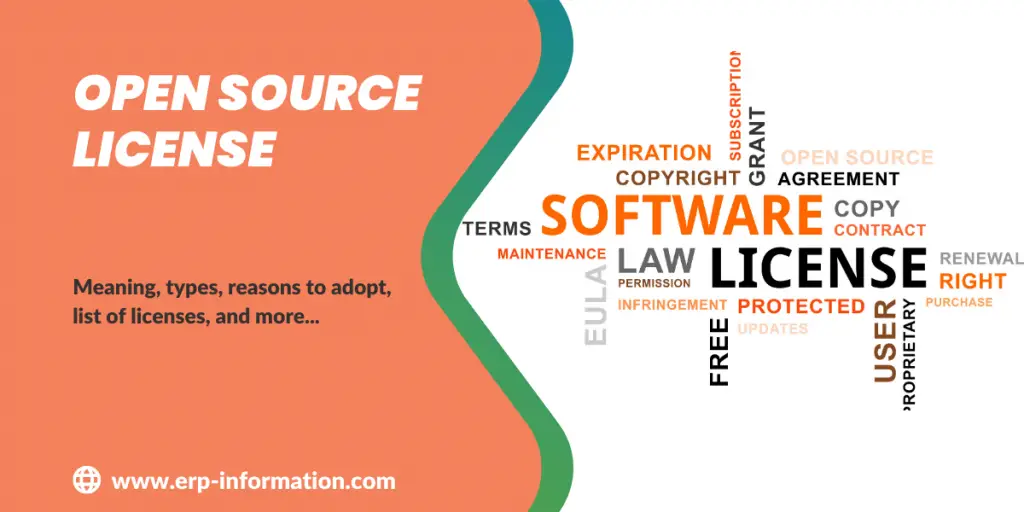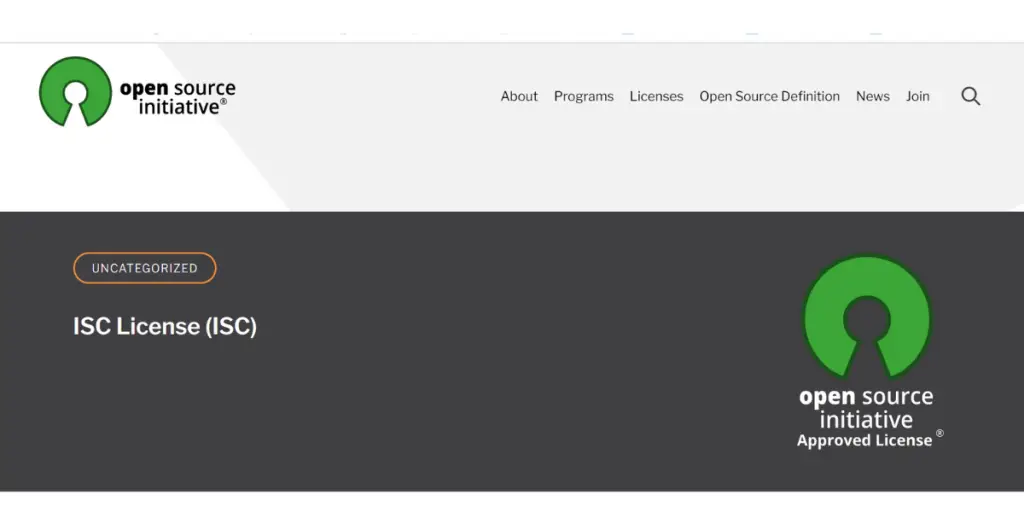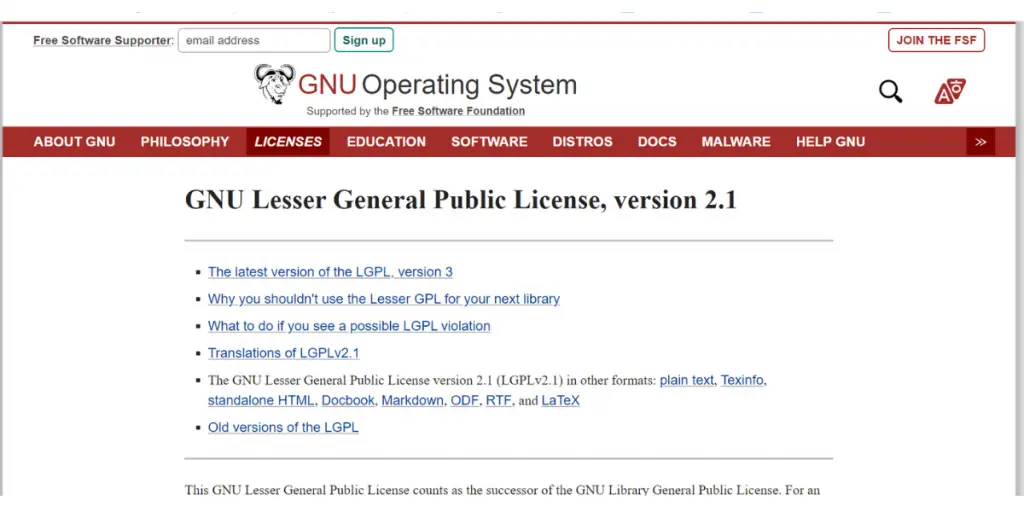Do you ever wonder how software is released to the public? Different types of licensing schemes allow developers to get their code out there for others to use, and one such type is open source license.
In today’s world, everyone has some open-source software program. So whether you are a tech giant or a small business owner, an open-source license is something every company needs to understand.
An open-source license enables users to take work from others, modify it for use, and even redistribute the original version without any financial ramifications.
To further explore this, the article will discuss open-source licenses’ meaning, types, and reasons to adopt them in projects and provide a list of open-source license vendors.
What is an open source license?
An open-source license is a legal and binding agreement that governs open-source software’s use, distribution, modification, and sharing.
Open source license grants specific permissions to users, ensuring that the software remains freely available and accessible while protecting the rights of the original developers or authors.
Open source licenses help people create and share free software. Normally, intellectual property laws stop people from changing and sharing creative works.
It allows people to use the software, look at the code, change it, and even give out their changes. But, of course, this only works for computer software where you need to see the source code to make changes.
Open-source licenses are for computer software where the code used to make the program can be seen. These licenses can also be used for hardware, infrastructure, drinks, books, and music.
Types of open source licenses
It has two major categories called permissive and copyleft.
Permissive open source license
Permissive licenses come from colleges and universities. They let people make changes and share the work, but they must credit the original creator and say that no one is responsible if something goes wrong.
Copyleft licenses
Copyleft licenses come from the free software movement. It means you must give credit to the original creator and can modify and share their work. But if you do, you must also share your modified version with others under the same copyleft license.
Reasons to adopt open source license
If you are a developer starting a project, knowing about open-source software licenses is important. This helps you decide how other people can use your work. It also helps users to know what they can and cannot do with the creator’s work.
In the case of copyright, it is unclear what other people are allowed to do with your work without a license after the completion of real work. However, with the help of open-source software licenses, people can complete their work. Here are a few reasons why you might need one.
Supports for improvement
Open source license that allows people to work on the software and make it better for everyone. People become responsible for improving the code so everyone can benefit from it.
Provides ownership
An open-source software license tells people how much control you have over the work. You can choose to give yourself more power or less power. If you want more control, pick a license that lets you do that.
Provides popularity
There are lots of software programs out there. If you want to join them, use an open-source license. That will help you become more popular. Some examples of open-source software are Linux, Android by Google, and Firefox browser, which all compete with other established proprietary alternatives.
Selection tips for the best open-source license
Below are some tips to help you to compare the different open-source licenses and select the best one.
- Take care while selecting the copyleft license.
- Copyleft licenses are more restrictive than permissive licenses.
- A permissive license is the best option when you want to share and reuse your code. This lets other people use it too.
- If you make software that works over the internet, it is helpful to use the AGPL.
- You can think about the GPL license, which has two versions: GPLv2 and GPLv3. The changes in version 3 make it better than version 2.
- MIT licenses are very popular. People know and understand them easily. You can use the software in any way you like – no restrictions. And it works with other open-source licenses, which means that code from different projects can be used together even if they have different licenses.
Best open-source licenses
The permissive license list is as below.
1. MIT (Massachusetts Institute of Technology) license
MIT license is a permissive open-source software license. It originated at the Massachusetts Institute of Technology in the late 1980s.
In 2009, MIT’s faculty created a policy called Open Access. The Technology Licensing Officer (TLO) works with the faculty and the Office of General Counsel to determine the best licenses when people share copyright material online.
How to get an MIT license?
- Before choosing to distribute via open source, the authors should confirm that any software sponsors will agree to an open-source distribution model.
- They need to fill out the MIT software disclosure form.
- An author should get confirmation from TLO that no active research grants are stopping the distribution.
- They will also ensure that the department, lab, or center head approves it before sharing it with others.
2. Apache 2.0 license
Apache 2.0 is a permissive free, open-source license written by Apache. The Apache License was made in 2004. It helps us make good software that will last a long time. All software from the Advanced System Format (ASF) will use this license.
This license allows the contributor to let others make copies and changes and show or perform their work. They can do this anywhere in the world for free and forever.
How to get Apache 2.0 license?
If you want to use the Apache License for certain files
- Attach the boilerplate declarations and add the words.
- Change the information in [ ] with details that describe you. Put this text in a comment at the top of each file.
- It is a good idea to include the name and purpose of each file on the same page as your copyright notice so people can easily find it in the archives.
3. ISC license
This is a permissive software license by Internet Systems Consortium. The license lets people use, change, and share software for free. The Open Source Initiative (OSI) ensures the license follows its rules. They do this by checking it through their review process.
Available versions
Certain versions of BIND 9, ISC DHCP, and Kea software were released with the ISC license. The Open Source Initiative approved this license. It lets people use, copy, change, and distribute this software without paying anything.
4. BSD 3 clause “New or Revised” license
BSD license also belongs to the permissive open-source software license family.
The BSD license is a type of agreement that comes in two forms. One is the original version used for the BSD Unix software, and the other is called modified BSD.
Both versions require that if someone uses your code or software, they must keep a notice saying it belongs to you and was made by you. The difference between the two licenses is that with the modified BSD license, someone does not need to give away source code when using your work.
This is available for commercial, private, distribution, and modification use. And on the downside, it has limited liability and a warranty period.
5. The Unlicense
Unlicense is a way to let people use the software you wrote without paying for it. It uses the copyright waiver from the public domain SQLite project and the no-warranty statement from the MIT/X11 license. This way, your software can be given away for free.
It saves time to make lawyers rich or add restrictions when using code. Sometimes you do not use a software library because it does not have the same open-source license as what you prefer. You might spend too much time thinking about how to license your software and if it is compatible with other software.
Copyleft Licenses
1. Mozilla Public License
The Mozilla Public License (MPL) is a free and open-source license. It is used for most software from the Mozilla Foundation, like Firefox and Thunderbird.
Mozilla made the MPL to meet the needs of both open-source and proprietary developers. It’s different than other licenses because it allows people to use code from an MPL license, but only if they make sure that code stays accessible to everyone.
- When adding or changing existing stuff in the same area of code, keep it under the same license.
- Before using code from someone else, you must check with the licensing team. For more information, Mozilla employees can look at the Licensing & Contributor Agreements Runbook.
2. GNU Lesser General Public License
The GNU Lesser General Public License (LGPL) is a type of license from the Free Software Foundation (FSF). Companies and developers can use it to add software to their programs, even if they are secret. But if someone changes that software, they must share it with others using the same LGPL license.
General Public Licenses allow you to copy and share software with others. You can charge for this if you want. You can change the software and use parts of it in new programs. And you will be informed that you have the right to do these things.
3. Eclipse public license v2.0
The Eclipse Public License (EPL) is a free and open-source software license. It is used for projects like the Eclipse IDE from the Eclipse Foundation. EPL license replaces the Common Public License (CPL). It also removes terms connected to lawsuits related to patents.
This license is given to you with certain rules. You must follow this agreement’s rules if you use, copy, or share it.
4. SIL Open Front License
The SIL Open Font License (OFL) is a license created for fonts and software related to fonts. It allows people to use, bundle, change, and share the font or software. Everyone worldwide can work together on it, and it works on all types of computers. It also helps everyone gain value from using the font or software.
The Open Font License is software that anyone can use for free. However, the copyright holder might say no one else can use their font name. You also cannot sell the fonts independently, but you can sell them in a bundle with other software.
5. Creative Commons Attribution license
A Creative Commons (CC) License allows an author to give others the right to use their work. This means people can share, use, and build on the work.
People who use or share this work will not break any laws if they follow the license rules. The author has control over what other people can do with their work and can decide if they want it to be free or if there should be a fee for using it.
Terms to be followed for Creative Commons license.
- When you use someone else’s work, give them credit. You can do this by providing a link to their license and telling people if you changed the work.
- You cannot use laws or technology to stop someone from doing something the license allows.
FAQs
What is the difference between an open-source license and a Commercial license?
Open source software license is computer software anyone can look at, change, and improve. Everyone can share it too. A commercial software license only has a few people who can change it. They are the ones who made it.
Who owns the open-source license?
The creator of the software owns it but allows others to use, change and share it. The rules for using the software are usually the same for everyone, and these rules are called licenses. Examples of licenses are MIT, GNU LPGL, and Apache.
Conclusion
Open source license is an important agreement between the developer and the users of a piece of software. It ensures that everyone involved knows exactly how intellectual property and software rights are transferred, limiting liability and protecting each party.
Developers can choose from many excellent open-source licenses, depending on the nuances of what they’d like to do. So whether you’re a developer or want to use open-source code in your project, we hope this blog post will help you get familiar with open-source licenses.









